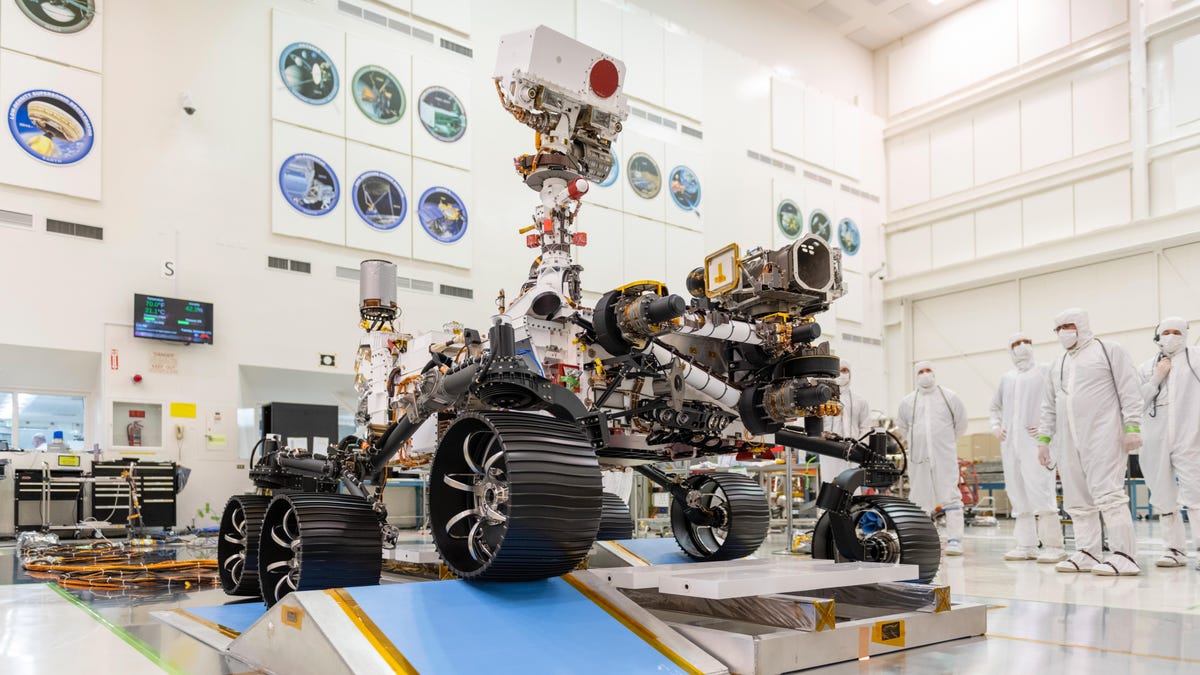NASA's Mars 2020 rover passes its first driving test
After successfully rolling around NASA's Jet Propulsion Laboratory in Southern California, the rover is ready for the red planet.

NASA's Mars 2020 rover is ready to drive on the Red Planet.
NASA's next Mars rover has successfully completed its first drive. The rover was able to roll forward and backward and do a spin at NASA's Jet Propulsion Laboratory in Pasadena, California, on Tuesday, the space agency said in a release. The rover is now set to drive on the red planet.
"Mars 2020 has earned its driver's license," Rich Rieber, lead mobility systems engineer for Mars 2020, said in a statement. "The test unambiguously proved that the rover can operate under its own weight and demonstrated many of the autonomous-navigation functions for the first time. This is a major milestone for Mars 2020."
The Mars 2020 mission is slated to launch in July or August of next year. It'll look for signs of past microbial life, characterize the planet's geology and climate and help prepare for human exploration of Mars. It's scheduled to land on Feb. 18, 2021.
Mars 2020 will be able to make more driving decisions than previous rovers, NASA says. It packs higher-resolution, wide-field-of-view color navigation cameras, improved auto-navigation software and an extra computer "brain" to make maps and process images. It also features redesigned wheels to allow for increased durability. These elements will allow the rover to average around 650 feet per Martian day, according to NASA.
First published Dec. 18, 2:34 p.m. PT.
Update, 2:44 p.m. PT: Adds more details.

